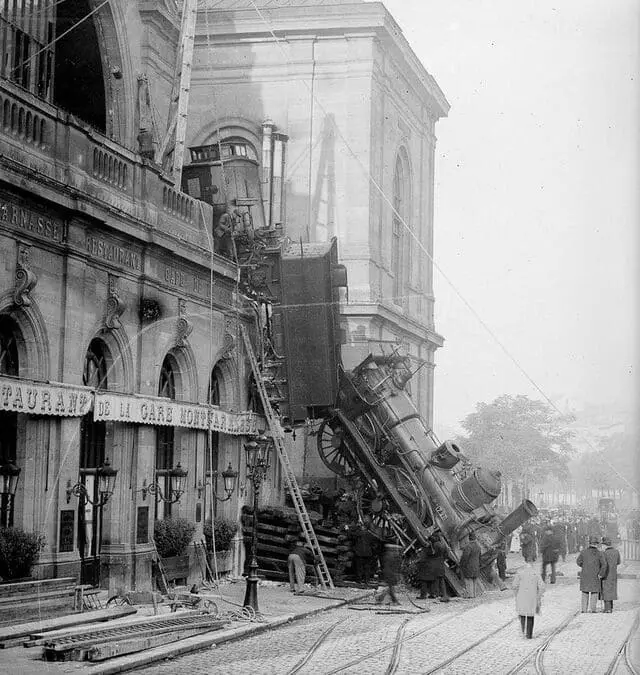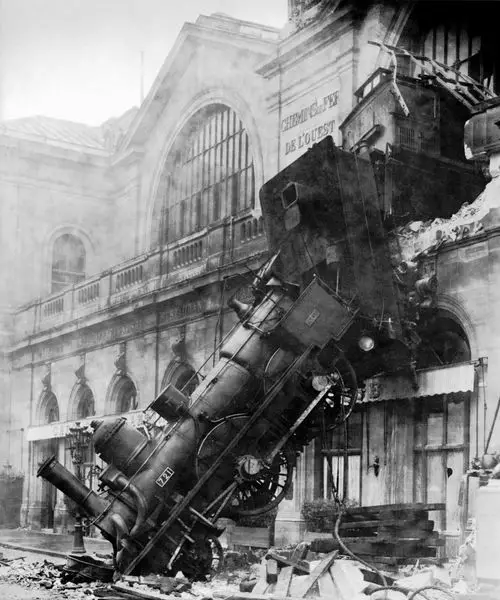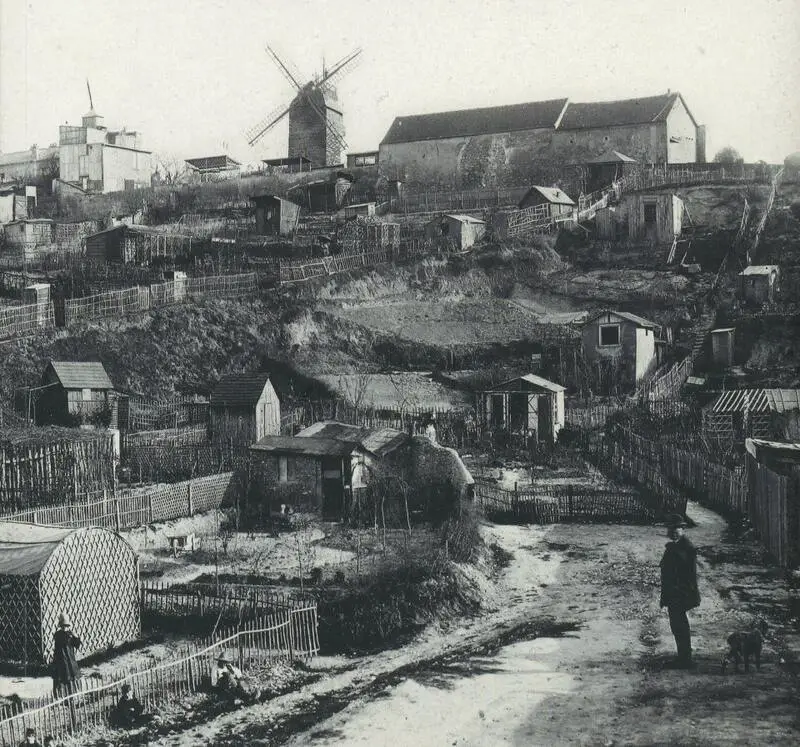Life is often a series of unexpected events, sometimes monumental enough to hit the front pages. One such event is the infamous railway accident at Gare Montparnasse in Paris, a disaster immortalized by early photographers and still remembered today as one of the most famous railway accidents in history.

On October 22, 1895, the number 56 express train departed from Granville in the La Manche region at 8:45 am. It was scheduled to arrive at Gare Montparnasse, its terminus, at 3:55 pm.
However, as it approached the station, mechanic Guillaume Pellerin and operator Victor Garnier discovered that the air brake was defective. Attempting to compensate for delays, they reversed the pressure and signaled for emergency brakes, but nothing happened.
The train, consisting of the locomotive, a coal car, two baggage cars, ten passenger carriages, and a final baggage car, hurtled into the station at 40 km/h.
It demolished the wooden buffer, crashed through the concrete embankment, and destroyed the station’s facade before plummeting onto a tram station below.

Remarkably, the accident resulted in only one fatality: Marie-Augustine Aguillard, a newspaper seller who left behind two young children. Pellerin and Garnier were thrown from the train upon impact, and the passengers suffered only minor injuries. Despite this, the material damage was extensive.
The media coverage of the incident was unprecedented. Within minutes, thousands of onlookers flocked to Gare Montparnasse to witness the aftermath. Authorities deployed 120 municipal guards to manage the crowd, and some people even bought train tickets just to get inside the station. Journalists quickly descended on the scene, with the story making headlines as far as the United States. In France, the press covered the event extensively, sometimes even humorously.

The technical challenge of extracting the locomotive and coal car from the wreckage was immense. Engineers began by securing the coal car to prevent it from falling further. The 50-tonne locomotive, precariously balanced, was a far greater problem. They initially tried to remove it using a structure of planks and the strength of 50 men, but failed. Next, they employed 15 horses, also to no avail. Finally, they succeeded using a system of a large winch and powerful jacks, eventually moving the coal car back onto the tracks.
A lengthy inquiry followed, concluding that the air brake had malfunctioned. Despite being an excellent employee, Guillaume Pellerin received a two-month suspended prison sentence and a 50 franc fine for homicide and reckless injuries. Albert Mariette, one of the drivers, was fined 25 francs. The railway company, Compagnie des Chemins de Fer de l’Ouest, acknowledged its responsibility and compensated Marie-Augustine Aguillard’s partner, paid for the children’s education, and promised them jobs within the company.
The broader lesson from the Gare Montparnasse railway accident is that such events are often the result of multiple factors. Whether it’s a minor mishap or a significant catastrophe, things are never quite the same afterward. This accident, etched into history, serves as a poignant reminder of the unpredictable nature of life and the far-reaching consequences of human error.
I aim to share my tips and recommendations for the beautiful country of France. My goal is to help you plan your next adventure, whether it’s a weekend getaway or a once-in-a-lifetime trip. From finding the best hotels and restaurants, to discovering unique activities and sights, I’ve got you covered!




